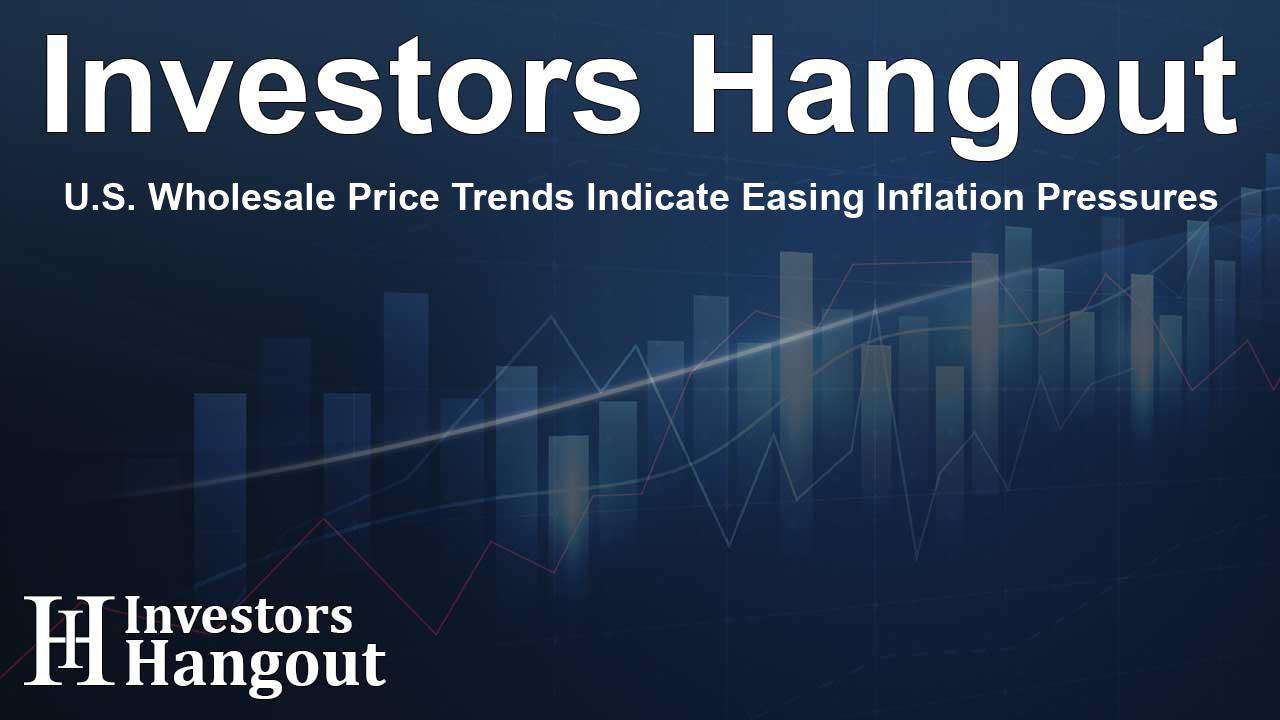U.S. Wholesale Price Trends Indicate Easing Inflation Pressures

Understanding Recent U.S. Wholesale Price Trends
The current landscape of U.S. wholesale prices offers a glimpse into the ongoing battle against inflation. Recently released data indicated that wholesale price increases are showing signs of slowing down, which may signal a shift in monetary policy from the Federal Reserve.
Producer Price Index Overview
The producer price index (PPI) is a key economic indicator that gauges inflation before it impacts consumers directly. According to the latest report, the PPI rose by only 0.2% from July to August, a notable deceleration compared to previous fluctuations. In year-over-year comparisons, the index increased by 1.7% in August, marking the most modest annual rise since February, and a decrease from the 2.1% uptick noted in July.
Core Wholesale Prices
Analyzing core wholesale prices—those excluding the often volatile sectors of food and energy—offers further insights. These prices increased by 0.3% from July and exhibited a 2.3% rise compared to August of the previous year, hinting at a more stable inflation scenario and perhaps better consumer purchasing power.
Inflation and the Federal Reserve's Target
The Federal Reserve aims for an inflation rate of approximately 2%. Recent wholesale price indicators suggest a trajectory toward this goal. After experiencing a high inflation rate in mid-2022, there has been a noticeable stabilization in the pricing of goods, including essential items like gas and groceries.
Consumer Price Index Trends
Furthermore, the government's consumer price index (CPI) reported only a 2.5% increase in prices over the past year, a significant moderation compared to past years. Such trends are crucial as they prompt speculation about future Federal Reserve actions regarding interest rates.
The Impact of Political Rhetoric
Recent political debates have also brought inflation into sharp focus. In a discussion, political figures have debated the causes of recent inflation spikes and their implications for the economy. Such dialogues contribute to public perception and may influence policy direction as well.
Future Expectations for Rates
In response to declining inflation rates, the Federal Reserve is contemplating the first interest rate cuts after a lengthy period of sustained increases. The expectation is that any cuts would initially be modest, with discussions revolving around a quarter-point reduction. This change could potentially lower borrowing expenses across multiple sectors, thereby making loans more affordable for consumers.
Evolving Economic Conditions
With the economy steadily adjusting to new post-pandemic norms, the shift in inflation dynamics suggests that the Federal Reserve may have the room to take a more accommodative stance in the near future. Observers will be closely monitoring these developments, as they have direct implications for financial markets and individual consumers alike.
Frequently Asked Questions
What is the producer price index (PPI)?
The producer price index (PPI) measures how the prices of goods and services change from the perspective of the seller, reflecting inflation trends before they reach consumers.
How does the PPI affect consumer prices?
The PPI serves as an early indicator of future consumer price changes, as increases in wholesale prices often lead to higher retail prices for consumers.
What role does the Federal Reserve play in managing inflation?
The Federal Reserve monitors inflation trends closely and adjusts interest rates accordingly to stabilize prices and promote economic growth.
What are core wholesale prices?
Core wholesale prices exclude volatile food and energy prices, providing a clearer picture of underlying inflation trends.
What can we expect from future interest rates?
Given the recent trends in wholesale prices and inflation, the Federal Reserve may begin to cut interest rates to stimulate economic growth, making borrowing cheaper for consumers.
About Investors Hangout
Investors Hangout is a leading online stock forum for financial discussion and learning, offering a wide range of free tools and resources. It draws in traders of all levels, who exchange market knowledge, investigate trading tactics, and keep an eye on industry developments in real time. Featuring financial articles, stock message boards, quotes, charts, company profiles, and live news updates. Through cooperative learning and a wealth of informational resources, it helps users from novices creating their first portfolios to experts honing their techniques. Join Investors Hangout today: https://investorshangout.com/
Disclaimer: The content of this article is solely for general informational purposes only; it does not represent legal, financial, or investment advice. Investors Hangout does not offer financial advice; the author is not a licensed financial advisor. Consult a qualified advisor before making any financial or investment decisions based on this article. The author's interpretation of publicly available data shapes the opinions presented here; as a result, they should not be taken as advice to purchase, sell, or hold any securities mentioned or any other investments. The author does not guarantee the accuracy, completeness, or timeliness of any material, providing it "as is." Information and market conditions may change; past performance is not indicative of future outcomes. If any of the material offered here is inaccurate, please contact us for corrections.